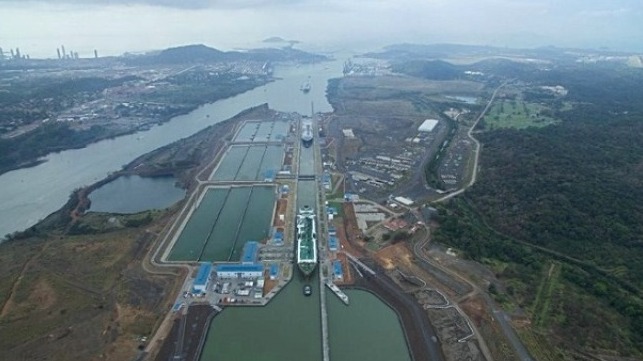Volumes Decline at Panama Canal in 2020 Due to Trade War and Pandemic

The Panama Canal Authority reported fiscal year-end results for 2020, which like, most parts of the shipping industry, were impacted by global economic factors. As a result, volumes at the Panama Canal were largely flat with declines in both the number of transit and tonnage versus projections.
Commenting on the factors that impacted the Panama Canal’s performance in 2020, the authority highlighted it was a year which began with the effects of the U.S.-China trade war as well as tightening environmental regulations, all of which impacted the shipping industry. Despite that, the authority reported that the year, which began on October 1, 2019, had begun strong, exceeding expectations.
The impact of the pandemic had begun to show early in calendar 2020. Cruise ship traffic had stopped in the canal by April. The height of the pandemic’s impact on the waterway, however, occurred the authority reported between May and July. During that time, transits declined by 20 percent, mainly due to reductions in passenger ships, vehicle carriers, and liquefied natural gas (LNG) tankers.
As global trade began to recover, the authority reports that transits and cargo movement normalized in August and September, the last two months of the fiscal year.
"The Canal's priority was to ensure the well-being of the nearly 10,000 men and women who make up our team and reaffirmed their commitment by adapting to the changes imposed by this pandemic in order to guarantee the continuous operation of the waterway," said Panama Canal Administrator Ricaurte Vásquez Morales. The authority also noted despite all the issues that it was able to maintain uninterrupted service.
For the 12 months, the Panama Canal saw a total of 13,369 transits, which represented a two percent reduction compared to projections. The canal handled a total of 475 million Panama Canal tons (PC/UMS) which was an overall drop of four percent compared to projections. However, offsetting the overall decline was a slight increase in the tonnage for what the canal authority calls high-draft transits or the largest vessels to use the canal.
Analyzing the data by segments of the shipping industry, containership made up more than a third of total tonnage transiting the canal in FY 2020 (more than 166 million tons) followed by bulk carriers, which were half the tonnage of containerships. Also, tankers and chemical tankers made up nearly 70 million tons while both LNG and LPG carriers each made up approximately 45 million tons. LPG tonnage, however, was down nearly 15 percent versus projections.
The segments that reported the strongest declines included car carriers which were down more than 20 percent versus projects. Cruise ship tonnage was down 10 percent versus expectations for 2020.
The Panama Canal worked to mitigate the declines in volumes and respond to the shipping industry by offering a series of temporary relief measures, including the suspension of advance payments for transit reservation fees and other changes to the waterway's reservation system. Currently, these measures have been extended through December 31, 2020.
The Panama Canal Authority believes that the situation has stabilized and looks towards rebuilding in the future. They noted that at the end of FY 2020, for the first time in 20 months, the Panama Canal was able to offer a 50-foot draft, the maximum draft allowed for vessels transiting the Neopanamax Locks. This creates additional efficiencies for shippers who can increase the load on their vessels scheduled to transit the canal. In addition, the Panama Canal Authority recently put out a request for qualifications as the first step in a long-term water management program that they believe will provide more consistency and reduce draft restrictions that have been necessary as part of the current water management programs.
